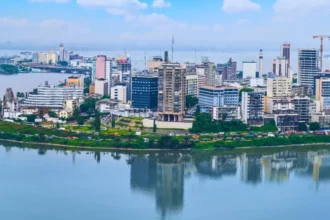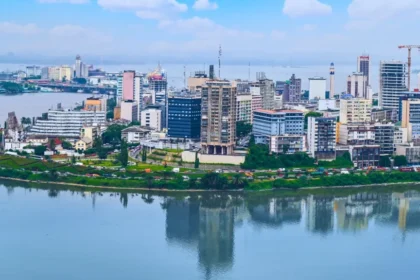At a Glance:
- Nollywood leads Africa’s film boom, set to surpass $14.8 billion by 2025 with Netflix, Prime Video backing.
- South Africa’s film industry thrives, earning $122 million in 2021, attracting global studios with tax incentives.
- Kenya, Egypt, and Ghana push African cinema global with Oscar entries, streaming deals, and bold storytelling.
Africa’s film industry has gained unprecedented global recognition, with homegrown talent making waves on the international stage.
In recent years, African movies have secured theatrical releases in major markets, earned nominations at the Oscars, and dominated prestigious film festivals worldwide.
To spotlight the continent’s cinematic excellence, we’ve ranked the top 10 African nations shaping the industry.
These countries have produced box office hits, nurtured globally recognized stars, and consistently delivered high-quality films that resonate beyond local audiences.
Their impact on storytelling, production value, and commercial success continues to redefine Africa’s position in global cinema.
From billion-dollar box office hits to groundbreaking storytelling, these 10 African film industries are driving the continent’s entertainment revolution.
1. Nigeria
Nigeria’s Nollywood is the second-largest film industry in the world by production volume, trailing only India’s Bollywood.
With an estimated 2,500 films annually, Nollywood generates $7.7 million in box office revenue, projected to surpass $14.8 billion by 2025.
Films like Everybody Loves Jenifa, which grossed over ₦1 billion ($0.67 million) in 2024, showcase Nollywood’s global appeal.
Directors such as Kunle Afolayan, Kemi Adetiba, and Jade Osiberu continue to push the boundaries with high-budget productions featured on platforms like Netflix and Prime Video.

2 .South Africa
South Africa boasts one of the most sophisticated film industries on the continent, producing high-budget movies with world-class visual effects.
The industry earned $122 million in revenue in 2021 and is projected to reach $182.5 million by 2025.
Recent hits such as Inside Out 2, Deadpool & Wolverine, and Wicked led South Africa’s 2024 box office, with Inside Out 2 grossing $2.6 million.
International co-productions and tax incentives continue to attract global studios to South Africa, cementing its position as a premier African film hub.

3. Kenya
Kenya’s film industry, though smaller than Nollywood and South Africa’s, has made significant strides in recent years.
The country’s average film revenue stands at $4.7 million, with critically acclaimed movies such as Rafiki breaking international boundaries.
Netflix and other streaming platforms have fueled growth, offering Kenyan filmmakers a global audience.
Wanuri Kahiu’s Rafiki remains one of Kenya’s most influential films, demonstrating the industry’s ability to tackle bold narratives while gaining commercial success.

4. Uganda
Uganda’s Ugawood is gaining traction, producing over 50 films.
The country’s unique film-viewing culture—where “Video Jokers” narrate movies to audiences—sets it apart.
Films such as Who Killed Captain Alex? and Queen of Katwe have garnered international acclaim.
The rise of digital platforms and increasing production budgets suggest a bright future for Uganda’s film industry.

5. Cameroon
Cameroon’s Collywood has seen a resurgence, with local productions gaining international recognition through platforms like Netflix and Amazon Prime.
Recent successes include The Fisherman’s Diary, which was Cameroon’s Oscar submission in 2021.
With improved production quality and digital accessibility, Cameroon’s film industry is on a steady upward trajectory.

6. Ghana
Ghana’s Ghallywood has faced challenges in recent years but remains a key player in African cinema.
With an average revenue of $1.1 million. The cinema market in Ghana is projected to grow to $7.54 million by 2029.
Blends Ghana’s rich culture with high-quality productions, collaborations with Nollywood boost its global appeal, drawing local and international audiences.
Successful films such as Azali and Picture Perfect have kept Ghanaian cinema relevant.
Streaming platforms and cross-border collaborations with Nollywood are fueling a potential resurgence for Ghana’s film industry.

7. Tanzania
Tanzania’s Swahiliwood (Bongo films) emerged in 2001 and has grown significantly.
Netflix’s acquisition of Binti marked a turning point, proving that Tanzanian cinema can attract international distributors.
The industry’s storytelling approach, rooted in Swahili culture, gives it a distinct voice on the global stage.

8. Egypt
Egypt produces over 30 films annually and remains a dominant force in African and Middle Eastern cinema.
Box office records show Egyptian films grossing around $50 million annually, outpacing Hollywood imports in the region.
Films such as Sahar el Layali and The Yacoubian Building highlight Egypt’s ability to merge artistic integrity with commercial success.

9. Mozambique
Mozambique’s film industry saw a decline after a strong post-colonial start, but recent efforts are revitalizing the sector.
International collaborations and government-backed initiatives are helping Mozambican cinema regain its foothold.
Documentaries remain a key strength, reflecting the country’s rich history and cultural narratives.

10. Namibia
Despite being a smaller nation with a population of just 2.6 million, Namibia has significantly contributed to Africa’s cinematic landscape.
Films like The White Line (2019), which was accepted as Namibia’s Oscar entry in 2022, demonstrate the country’s growing influence.
The film industry continues to grow, with local productions making an impact both economically and artistically, contributing to the global cultural conversation.

A new era of African Cinema
African cinema is no longer a regional phenomenon; it is a global powerhouse, showcasing diverse stories and talents to the world.
With burgeoning industries across the continent—from Nollywood’s dominance to South Africa’s global reach, and Kenya’s trailblazing films—Africa is poised to continue shaping the future of global entertainment.
As streaming platforms expand their reach and African films continue to win accolades, the world is taking notice of the continent’s powerful storytelling.















